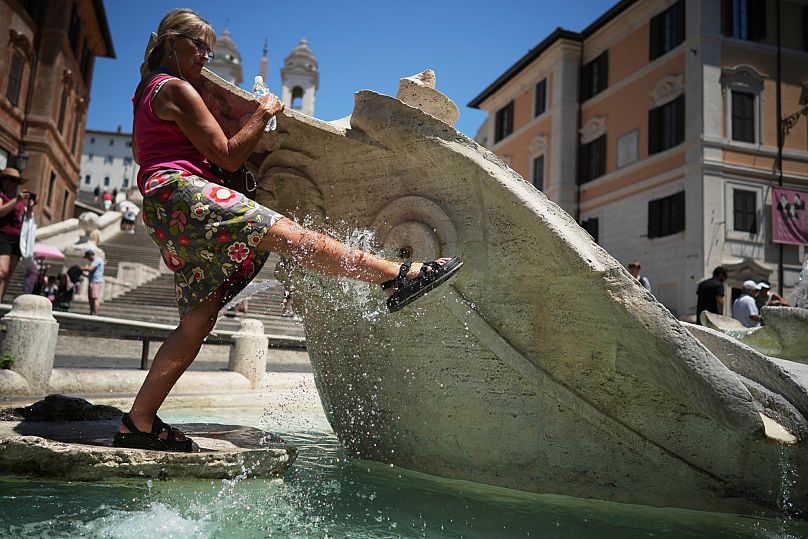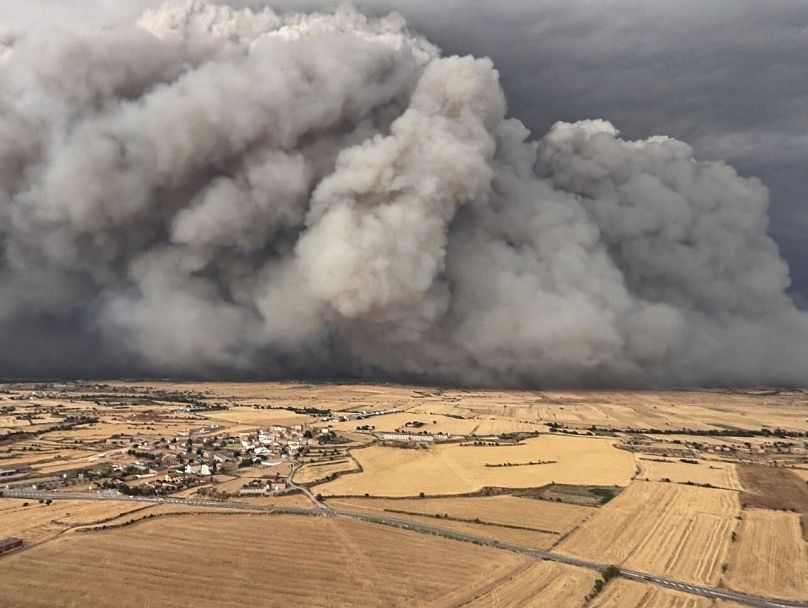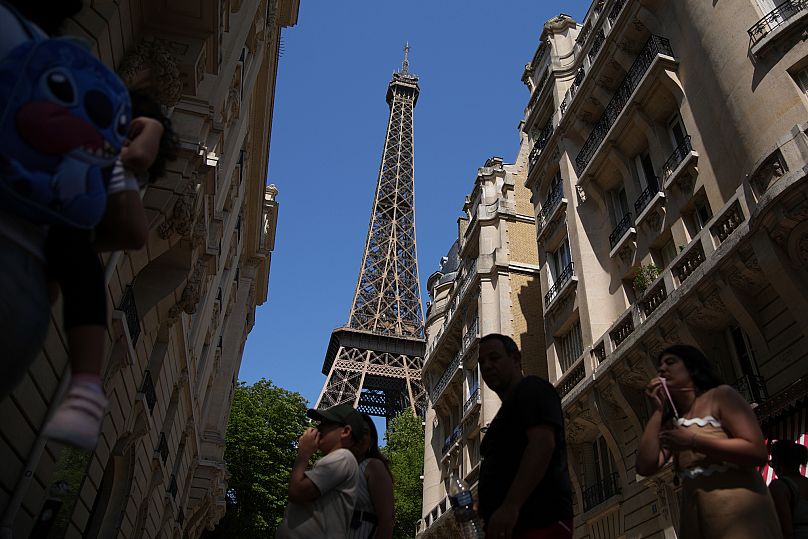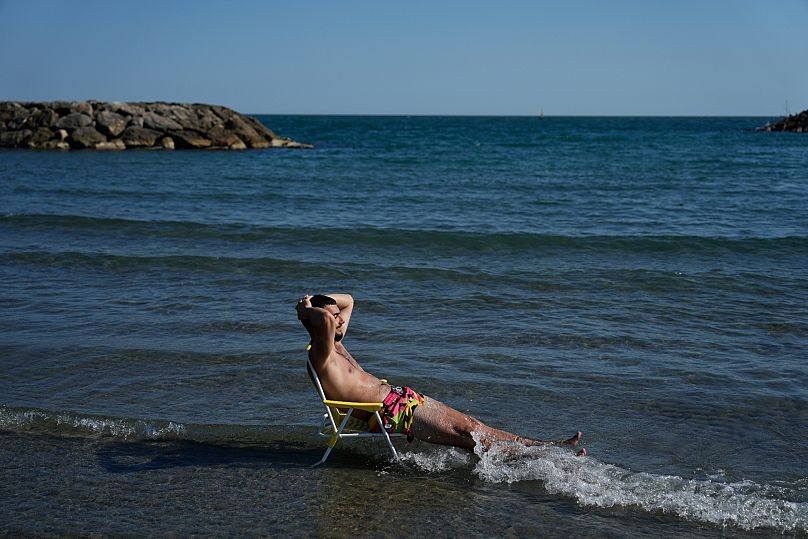Europe continues to struggle on Wednesday against extreme temperatures caused by an exceptional African anticyclone which is spreading across the continent, with authorities in several countries issuing new red alert warnings as emergency cases rise.
Heat warnings were issued for parts of Spain, Portugal, Italy, Germany and the UK, with new highs expected on Wednesday before forecast rain is expected to bring respite to some areas.
Italy
In the Italian capital Rome, people struggled to cope with the heat as temperatures rose above 40 degrees Celsius. Tourists dunked their hands, arms and faces into the city's ubiquitous fountains and snacked on gelato as they tried to keep cool.
Italy's Health Ministry issued red alert heat warnings for 17 cities across the country, including Rome, Florence, Turin and Milan.
Rome's Civil Protection unit set up air-conditioned tents around the city and handed out bottles of water in five mobile units around the city from the Colosseum to the Vatican.

"Sunglasses, a bit of sunscreen, a cap, and that's it. Oh yes and always have water in your bag," was the survival formula for Julie Riolacci, an 18-year-old visiting from Corsica.
Paolo Scarabaggio, a 20-year-old Italian, had a different solution: "Getting your arms wet with the water from the fountain," he said, "And then taking little streets that are in the shade and staying out of the sun."
On Monday, one person drowned after the Fréjus River in Italy's north flooded, while a 47-year-old working on a construction site near Bologna died during a concrete pour.
Spain
While in Spain's Catalonia region, a wildfire claimed two lives on Tuesday, with emergency services and officials predicting additional wind and thunderstorms for Wednesday.
The fire has since been contained and there were no additional injuries, according to fire crews, but the Torrefeta fire, which started in an agricultural area on Tuesday afternoon, destroyed multiple farms and affected an area of around 40 square kilometres.

The first heatwave of the year began its grip on Spain during the weekend and no relief is expected until Thursday, the national weather service said on Monday.
The country appeared to hit a new high for June on Saturday when 46 degrees Celsius was recorded in the southern province of Huelva, while residents in the capital Madrid say it is proving difficult to cope with city's high temperatures.
The Netherlands
Meanwhile, in the Dutch town of Soest, firefighters brought hoses to a local park on Tuesday evening to cool down residents amid a heatwave.
"Bring your water pistol and swimming clothes with you, because you're guaranteed to get soaked," the firefighters said in an Instagram post.
Dozens of families enjoyed the public event with water pistols.
"It's a very good idea of them to help and cool us down and entertain us at the same time," said Maarten, a Soest resident.
France
Paris' elegant Haussmann facades and narrow, historic streets that enchant tourists by day could soon turn against residents as brutal heat waves bake the city.
Soaring temperatures this week have exposed how the capital's storied architecture and dense urban "canyons" trap and radiate heat long after sunset, putting vulnerable populations at risk.
Urban climatologist Erwan Cordeau explained that sun-drenched limestone facades absorb massive amounts of heat during the day.
"Then at night, when there is no more sunlight, this heat will be released, meaning the street will struggle to cool down," he said.

The effect is most pronounced in central districts, particularly along the right bank of the River Seine, where night-time temperatures can run six to seven degrees Celsius hotter than in leafier, residential suburbs.
Further vulnerability factors include an ageing population and poorly insulated 19th-century apartment blocks.
On former railway grounds in the west of the city, a new development features a "green island" park designed to provide shade, manage water and serve as a cooling refuge.
"It offers several qualities: shading, rejuvenation, water management, irrigation, and effectively serves as a climate shelter for people when they experience pronounced thermal discomfort at home," Cordeau said as he strolled through the verdant oasis surrounded by modern residential buildings.

Where planting trees and restoring soil isn’t feasible, simple technical adaptations can help.
"It’s quite simple, but when there are no shutters today, we’ve seen examples where shutters can be installed, solar shades are added to buildings, or even above a street where it’s not possible to add vegetation, we can indeed use shading textures, as seen in Seville, for instance," Cordeau said.
As Europe endures the severe heat wave with record-breaking temperatures, experts have linked the rising frequency and intensity of the extreme weather to climate change.
Scientists warn that such extreme weather events are becoming increasingly common, in particular across Europe's southern regions.







